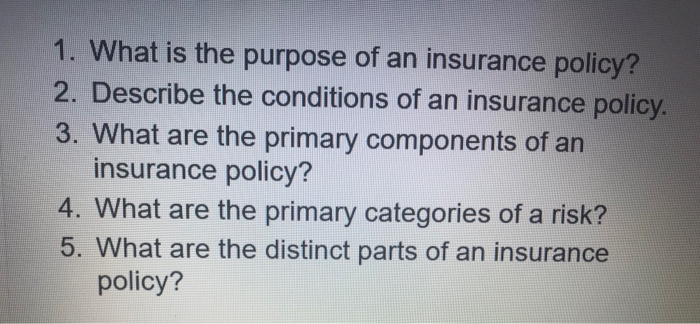Top Guidelines Of Pacific Prime

This drop of nearly 2 million in the variety of people 'without insurance policy (a reduction of about 4 percent) is absolutely a favorable change. With a softer economic climate in 2000 the most up to date reported gains in insurance policy protection might not proceed (Fronstin, 2001) (maternity insurance for expats). The decline in the variety of uninsured will not continue if the economy stays sluggish and healthcare prices proceed to outpace inflation
This is because the data were gathered for a period of strong economic efficiency. Of the approximated 42 million people that were uninsured, almost about 420,000 (about 1 percent) were under 65 years old, the age at which most Americans end up being eligible for Medicare; 32 million were adults in between ages 18 and 65, about 19 percent of all grownups in this age; and 10 million were kids under 18 years of age, about 13.9 percent of all children (Mills, 2000).
These price quotes of the number of persons without insurance are produced from the annual March Supplement to the Existing Population Study (CPS), performed by the Census Bureau. Unless otherwise kept in mind, nationwide estimates of individuals without medical insurance and proportions of the populace with various sort of protection are based on the CPS, one of the most commonly used resource of quotes of insurance protection and uninsurance rates.
Pacific Prime Can Be Fun For Everyone

Still, the CPS is specifically valuable since it produces yearly quotes relatively quickly, reporting the previous year's insurance policy coverage estimates each September, and due to the fact that it is the basis for a constant set of estimates for even more than twenty years, permitting analysis of fads in insurance coverage gradually. For these reasons, as well as the comprehensive use of the CPS in various other studies of insurance policy protection that exist in this record, we count on CPS price quotes, with restrictions noted.

The estimate of the variety of without insurance people expands when a populace's insurance coverage standing is tracked for a number of years. Over a three-year duration starting early in 1993, 72 million people, 29 percent of the united state populace, lacked coverage for a minimum of one month. Within a single year (1994 ), 53 million people experienced at the very least a month without coverage (Bennefield, 1998a)
Six out of every ten uninsured adults are themselves used. Working does enhance the probability that one and one's household participants will certainly have insurance policy, it is not a guarantee. Even participants of family members with two permanent breadwinner have almost a one-in-ten chance of being uninsured (9.1 percent uninsured rate) (Hoffman and Pohl, 2000).
The 4-Minute Rule for Pacific Prime
New immigrants account for a significant proportion of individuals without health and wellness insurance coverage. One evaluation has connected a considerable portion of the current growth in the size of the united state without insurance population to immigrants that arrived in the country in between 1994 and 1998 (Camarota and Edwards, 2000). Recent immigrants (those who concerned the USA within the previous 4 years) do have a high rate of being without insurance (46 percent), but they and their kids account for just 6 percent of those without insurance policy country wide (Holahan et al., 2001).
The relationship in between medical insurance and accessibility to care is well developed, as documented later on in this chapter. The partnership in between wellness insurance and health outcomes is neither direct nor basic, a substantial professional and wellness solutions study literary works her explanation web links health and wellness insurance policy coverage to enhanced access to care, better quality, and enhanced individual and populace health and wellness condition.
Degrees of evaluation for checking out the results of uninsurance. This conversation of medical insurance coverage concentrates mostly on the united state population under age 65 because essentially all Americans 65 and older have Medicare or other public insurance coverage. It focuses specifically on those without any type of health insurance coverage for any kind of size of time.
A Biased View of Pacific Prime
The issues dealt with by the underinsured are in some areas comparable to those encountered by the without insurance, although they are usually much less extreme. maternity insurance for expats. Uninsurance and underinsurance, nevertheless, include clearly various plan problems, and the methods for addressing them may vary. Throughout this research and the 5 reports to comply with, the primary focus gets on persons without any medical insurance and therefore no help in paying for health treatment beyond what is readily available through charity and safeguard establishments
Medical insurance is a powerful factor influencing receipt of treatment due to the fact that both individuals and physicians react to the out-of-pocket cost of services - https://fliphtml5.com/homepage/odsej/pacificpr1me/. Health insurance policy, nonetheless, is neither required neither enough to get to clinical services. The independent and straight result of health insurance policy protection on accessibility to wellness services is well developed.
Others will obtain the health and wellness care they need even without health and wellness insurance policy, by spending for it expense or seeking it from companies who offer treatment totally free or at highly subsidized rates. For still others, health and wellness insurance policy alone does not make certain invoice of care as a result of various other nonfinancial obstacles, such as a lack of health care providers in their neighborhood, restricted access to transport, illiteracy, or etymological and social distinctions.
The 5-Minute Rule for Pacific Prime
Formal research study about without insurance populations in the USA dates to the late 1920s and early 1930s when the Board on the Expense of Treatment created a series of records regarding funding doctor workplace check outs and hospital stays. This problem came to be salient as the numbers of clinically indigent climbed during the Great Clinical depression.
Comments on “Things about Pacific Prime”